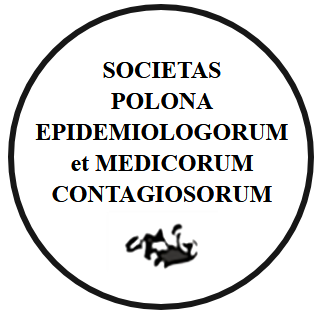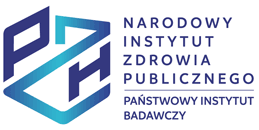ABSTRACT
INTRODUCTION. Rubella has been included in the elimination program coordinated by the World Health Organization (WHO) since 2005. Elimination of rubella in the country is possible provided that min. 95% of the vaccination status of the population and monitoring the epidemiological situation, including recording all suspected rubella and conducting laboratory diagnostics at the WHO Reference Laboratory.
AIM. The aims of the present article are to analyze the epidemiological situation of rubella in Poland in 2019 and to discuss the rubella vaccination coverage.
MATERIAL AND METHODS. The assessment of the epidemiological situation of rubella in Poland was conducted on the basis of aggregated reports of suspected rubella cases sent to the National Institute of Public Health - National Institute of Hygiene by Voivodeship Sanitary and Epidemiological Stations, and data from the bulletin “Infectious diseases and poisoning in Poland in 2019” and “Vaccinations in Poland in 2019 “.
RESULTS. In 2019, there was a decrease in the number of rubella cases with registered 285 cases (in 2018 – 37 cases), and a decline in incidence (from 1.1 per 100,000 to 0.74). The highest incidence rate, regardless of gender and the environment, was observed among children agded 0-4 years (6.4 per 100,000). In 2019, no cases of congenital rubella syndrome were registered. In 2019, only 3 (1.05%) cases were classified as laboratoryconfirmed cases. The remaining 98.9% (282 cases) were diagnosed on the basis of clinical symptoms.
CONCLUSIONS. In 2019, there was a decrease in the number of rubella cases. In Poland rubella in reported exclusively on the basis of the clinical picture. The proportion of laboratory tests confirming/excluding rubella infection is still very low in Poland.
STRESZCZENIE
WSTĘP. Różyczka od 2005 r. objęta jest programem eliminacji, koordynowanym przez Światową Organizację Zdrowia (WHO). Eliminacja różyczki w kraju możliwa jest pod warunkiem osiągnięcia min. 95% stanu zaszczepienia populacji oraz monitorowania sytuacji epidemiologicznej, w tym rejestrowania wszystkich podejrzeń różyczki oraz prowadzenia diagnostyki laboratoryjnej w Laboratorium Referencyjnym WHO.
CEL PRACY. Celem pracy jest ocena sytuacji epidemiologicznej różyczki w Polsce w 2019 r. z włączeniem oceny stanu zaszczepienia przeciw różyczce oraz stopnia realizacji programu eliminacji różyczki WHO w Polsce.
MATERIAŁ I METODY. Ocenę sytuacji epidemiologicznej różyczki w Polsce przeprowadzono na podstawie zagregowanych zgłoszeń podejrzeń zachorowań na różyczkę nadesłanych do NIZP - PZH przez Wojewódzkie Stacje Sanitarno-Epidemiologiczne, danych z biuletynu ,,Choroby zakaźne i zatrucia w Polsce w 2019 roku” oraz ,,Szczepienia ochronne w Polsce w 2019 roku”.
WYNIKI. W 2019 r. zarejestrowano 285 przypadków różyczki, o 152 przypadków mniej niż w 2018 r. (437 przypadków). Odnotowano również spadek zapadalności do 0,74 na 100 tys., w porównaniu do odnotowanego w 2018 r. (1,1 na 100 tys.). Najwyższą zapadalność, niezależnie od płci i środowiska, odnotowano w grupie wieku 0-4 lata (6,4 na 100 tys.). W 2019 r. nie zanotowano przypadków zespołu różyczki wrodzonej. W 2019 r. tylko 3 (1,05%) zachorowania zostały zakwalifikowane jako przypadki potwierdzone w badaniu laboratoryjnym. Pozostałe 98,9% (282 zachorowania) zostały rozpoznane na podstawie objawów klinicznych.
PODSUMOWANIE I WNIOSKI. W 2019 r. w Polsce odnotowano spadek liczby zachorowań na różyczkę.
Różyczka pozostaje rejestrowana na podstawie rozpoznań klinicznych, bez wymaganego potwierdzenia laboratoryjnego, co skutkuje zgłaszaniem wielu chorób wysypkowych jako różyczki.
You can change cookies settings in your browser. Restricted use of cookies in the browser configuration may affect some functionalities of the website.





